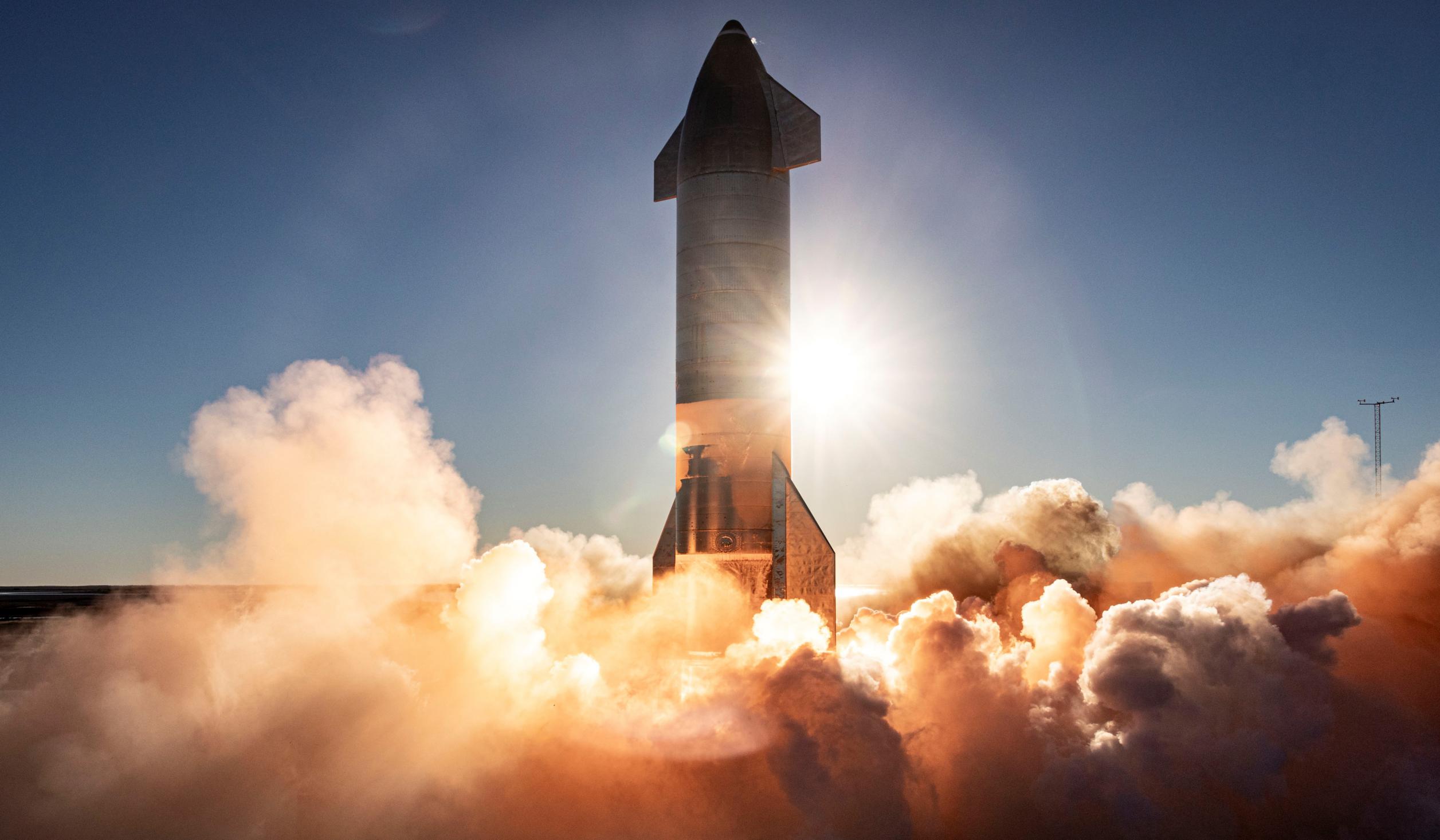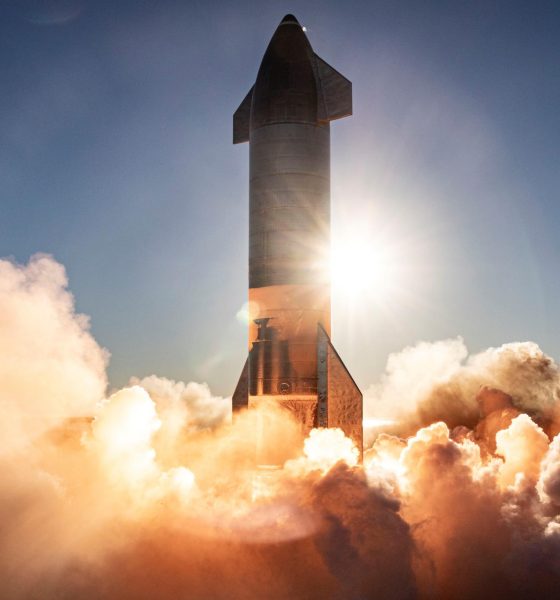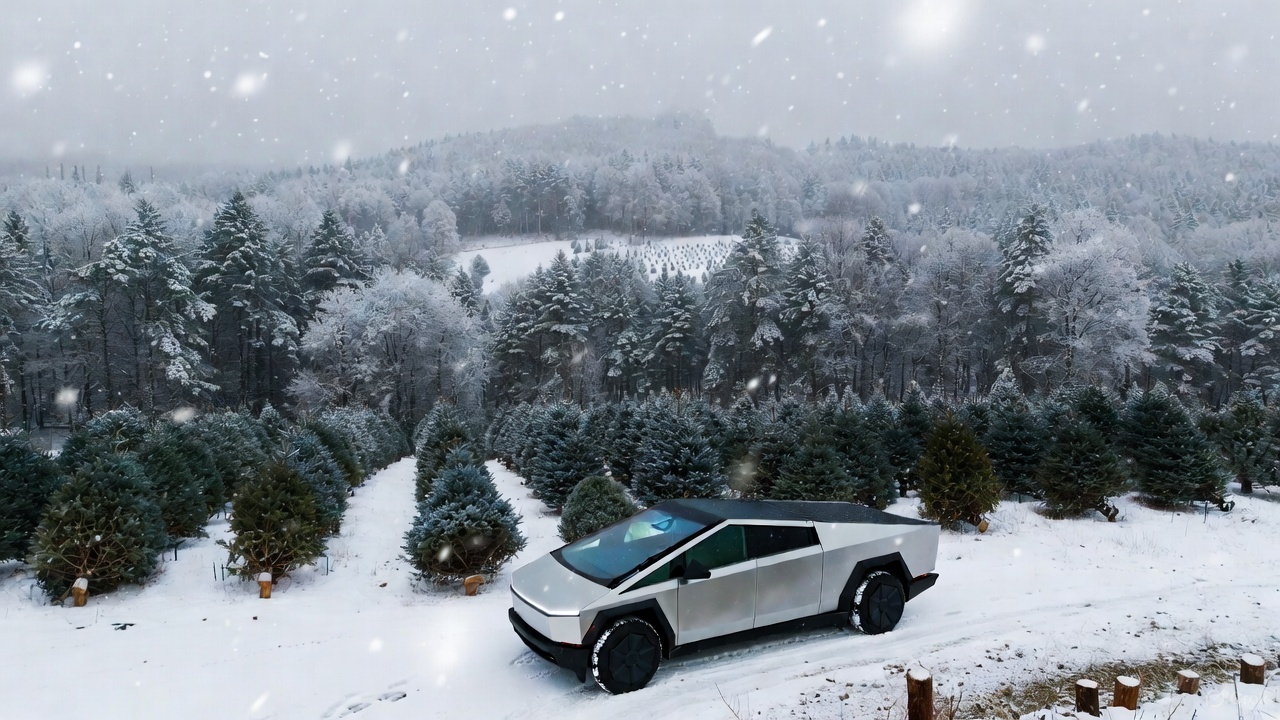

News
SpaceX Starship aborts Raptor engine test, briefly catches fire
Update: On March 15th, SpaceX got within milliseconds of Starship serial number 11’s (SN11) first Raptor engine test but suffered an abort just before full ignition, briefly leaving the rocket on fire.
Around 12:26 pm CDT, after an otherwise nominal static fire flow, Starship SN11 momentarily ignited one or two of its three Raptor engines’ preburners, referring to a central component that burns cryogenic liquid propellant into gas that’s ready for combustion. As with all preburner tests, intentional or otherwise, the end result looked a bit like a weak static fire and produced a small but visible amount of flame and thrust. Unlike intentional preburner tests, the static fire abort seemingly ignited something hidden inside Starship SN11’s and appeared to burn for at least another 30-40 seconds.
Raptor has proven itself to be an extremely durable engine, up to and including surviving visible onboard fires during actual Starship flight tests. Nevertheless, depending on the source of SN11’s post-abort fire and what it may or may not have burned or damaged, it’s no surprise that SpaceX ended testing for the day instead of quickly trying again, which it’s done several times prior. If the fire was largely harmless, SpaceX has already distributed notices suggesting a second attempt could happen as early as 6am to 12pm CDT (UTC-5) on Tuesday, March 16th. If more time is needed, SpaceX has the rest of the week to conduct any necessary repairs or swap out SN11’s Raptor engines.
Public documents show that SpaceX has plans to static fire and launch its latest Starship prototype within a two-day period that could begin later today.
SpaceX shipped Starship SN11 from its Boca Chica, Texas rocket factory to test and launch facilities a mile down the road on March 8th, less than five days after Starship SN10 exploded minutes after touchdown. The very next day, SpaceX completed ambient-temperature proof testing, filling Starship with benign nitrogen gas to check for leaks and verify system health. Two days after that, Starship SN11 appeared to complete a several-hour cryogenic proof test – swapping nitrogen gas for its supercool liquid form – without issue.
Despite the seemingly successful ‘cryo proof,’ something prevented a subsequent static fire test planned on March 12th before any attempt could be made, delaying the next attempt until after the approaching weekend. An agreement between SpaceX, Cameron County, and the state of Texas currently prevents road closures (and thus rocket testing) on weekends falling between Labor Day and Memorial Day, rules meant to preserve some level of public access to Boca Chica Beach.
As a result, unless SpaceX is already ready to launch (it has waivers for three such weekend closures for launch attempts), the company has to wait until Monday even if a minor issue fixable in hours or a day or so scrubs Friday test plans. While inconvenient, it’s worth noting that the existence of that public beach and the strong regulations that protect its public domain is likely one of the only reasons the general public can still get as close as they can to SpaceX’s Boca Chica ‘Starbase’.
For whatever reason, that road closure agreement does still mean that SpaceX will (in theory) be able to test and launch any day of the week from May 31st to September 6th, save for a few holidays, effectively boosting the number of opportunities by 40% for those 14 weeks. Until then, SpaceX is doing everything it can to take full advantage of the five days a week it is allowed to test Starship prototypes. N
Notably, although Starships SN8 and SN9 both hit a few weeks of technical and regulatory snags while preparing for their high-altitude launch attempts, SpaceX has been gradually speeding up that process over time. Starship SN10, the first prototype of its kind to land in one piece, took just 33 days to go from pad arrival to liftoff and spent just 8 days between its first static fire and launch attempts. The same feats took Starship SN8 77 and 50 days, respectively, with SN9 splitting the difference at 43 days from transport to liftoff and 28 days between its first static fire and launch attempts.
Road closure requests, a safety warning for residents, and a Temporary Flight Restriction (TFR) filed with the FAA all suggest that SpaceX’s current plan is to attempt Starship SN11’s first triple-Raptor static fire between 6am and 12pm CDT on Monday, March 15th. If that test goes almost perfectly, SpaceX wants to turn the rocket around for a 10 km (6.2 mi) launch attempt on Tuesday, March 16th – the very next day. Given the past performance of high-altitude Starship prototypes, that target is decidedly ambitious and likely to incur delays, but it still reveals the true scope of SpaceX’s goals even at this early stage of development.
If Starship SN11 does manage to launch within a few days of its first static fire attempt, SpaceX would still crush SN10’s 33-day record by a factor of three. Stay tuned for updates on Monday’s possible Starship static fire and rapid Tuesday turnaround attempt

Elon Musk
Starlink passes 9 million active customers just weeks after hitting 8 million
The milestone highlights the accelerating growth of Starlink, which has now been adding over 20,000 new users per day.

SpaceX’s Starlink satellite internet service has continued its rapid global expansion, surpassing 9 million active customers just weeks after crossing the 8 million mark.
The milestone highlights the accelerating growth of Starlink, which has now been adding over 20,000 new users per day.
9 million customers
In a post on X, SpaceX stated that Starlink now serves over 9 million active users across 155 countries, territories, and markets. The company reached 8 million customers in early November, meaning it added roughly 1 million subscribers in under seven weeks, or about 21,275 new users on average per day.
“Starlink is connecting more than 9M active customers with high-speed internet across 155 countries, territories, and many other markets,” Starlink wrote in a post on its official X account. SpaceX President Gwynne Shotwell also celebrated the milestone on X. “A huge thank you to all of our customers and congrats to the Starlink team for such an incredible product,” she wrote.
That growth rate reflects both rising demand for broadband in underserved regions and Starlink’s expanding satellite constellation, which now includes more than 9,000 low-Earth-orbit satellites designed to deliver high-speed, low-latency internet worldwide.
Starlink’s momentum
Starlink’s momentum has been building up. SpaceX reported 4.6 million Starlink customers in December 2024, followed by 7 million by August 2025, and 8 million customers in November. Independent data also suggests Starlink usage is rising sharply, with Cloudflare reporting that global web traffic from Starlink users more than doubled in 2025, as noted in an Insider report.
Starlink’s momentum is increasingly tied to SpaceX’s broader financial outlook. Elon Musk has said the satellite network is “by far” the company’s largest revenue driver, and reports suggest SpaceX may be positioning itself for an initial public offering as soon as next year, with valuations estimated as high as $1.5 trillion. Musk has also suggested in the past that Starlink could have its own IPO in the future.
News
NVIDIA Director of Robotics: Tesla FSD v14 is the first AI to pass the “Physical Turing Test”
After testing FSD v14, Fan stated that his experience with FSD felt magical at first, but it soon started to feel like a routine.

NVIDIA Director of Robotics Jim Fan has praised Tesla’s Full Self-Driving (Supervised) v14 as the first AI to pass what he described as a “Physical Turing Test.”
After testing FSD v14, Fan stated that his experience with FSD felt magical at first, but it soon started to feel like a routine. And just like smartphones today, removing it now would “actively hurt.”
Jim Fan’s hands-on FSD v14 impressions
Fan, a leading researcher in embodied AI who is currently solving Physical AI at NVIDIA and spearheading the company’s Project GR00T initiative, noted that he actually was late to the Tesla game. He was, however, one of the first to try out FSD v14.
“I was very late to own a Tesla but among the earliest to try out FSD v14. It’s perhaps the first time I experience an AI that passes the Physical Turing Test: after a long day at work, you press a button, lay back, and couldn’t tell if a neural net or a human drove you home,” Fan wrote in a post on X.
Fan added: “Despite knowing exactly how robot learning works, I still find it magical watching the steering wheel turn by itself. First it feels surreal, next it becomes routine. Then, like the smartphone, taking it away actively hurts. This is how humanity gets rewired and glued to god-like technologies.”
The Physical Turing Test
The original Turing Test was conceived by Alan Turing in 1950, and it was aimed at determining if a machine could exhibit behavior that is equivalent to or indistinguishable from a human. By focusing on text-based conversations, the original Turing Test set a high bar for natural language processing and machine learning.
This test has been passed by today’s large language models. However, the capability to converse in a humanlike manner is a completely different challenge from performing real-world problem-solving or physical interactions. Thus, Fan introduced the Physical Turing Test, which challenges AI systems to demonstrate intelligence through physical actions.
Based on Fan’s comments, Tesla has demonstrated these intelligent physical actions with FSD v14. Elon Musk agreed with the NVIDIA executive, stating in a post on X that with FSD v14, “you can sense the sentience maturing.” Musk also praised Tesla AI, calling it the best “real-world AI” today.
News
Tesla AI team burns the Christmas midnight oil by releasing FSD v14.2.2.1
The update was released just a day after FSD v14.2.2 started rolling out to customers.

Tesla is burning the midnight oil this Christmas, with the Tesla AI team quietly rolling out Full Self-Driving (Supervised) v14.2.2.1 just a day after FSD v14.2.2 started rolling out to customers.
Tesla owner shares insights on FSD v14.2.2.1
Longtime Tesla owner and FSD tester @BLKMDL3 shared some insights following several drives with FSD v14.2.2.1 in rainy Los Angeles conditions with standing water and faded lane lines. He reported zero steering hesitation or stutter, confident lane changes, and maneuvers executed with precision that evoked the performance of Tesla’s driverless Robotaxis in Austin.
Parking performance impressed, with most spots nailed perfectly, including tight, sharp turns, in single attempts without shaky steering. One minor offset happened only due to another vehicle that was parked over the line, which FSD accommodated by a few extra inches. In rain that typically erases road markings, FSD visualized lanes and turn lines better than humans, positioning itself flawlessly when entering new streets as well.
“Took it up a dark, wet, and twisty canyon road up and down the hill tonight and it went very well as to be expected. Stayed centered in the lane, kept speed well and gives a confidence inspiring steering feel where it handles these curvy roads better than the majority of human drivers,” the Tesla owner wrote in a post on X.
Tesla’s FSD v14.2.2 update
Just a day before FSD v14.2.2.1’s release, Tesla rolled out FSD v14.2.2, which was focused on smoother real-world performance, better obstacle awareness, and precise end-of-trip routing. According to the update’s release notes, FSD v14.2.2 upgrades the vision encoder neural network with higher resolution features, enhancing detection of emergency vehicles, road obstacles, and human gestures.
New Arrival Options also allowed users to select preferred drop-off styles, such as Parking Lot, Street, Driveway, Parking Garage, or Curbside, with the navigation pin automatically adjusting to the ideal spot. Other refinements include pulling over for emergency vehicles, real-time vision-based detours for blocked roads, improved gate and debris handling, and Speed Profiles for customized driving styles.








